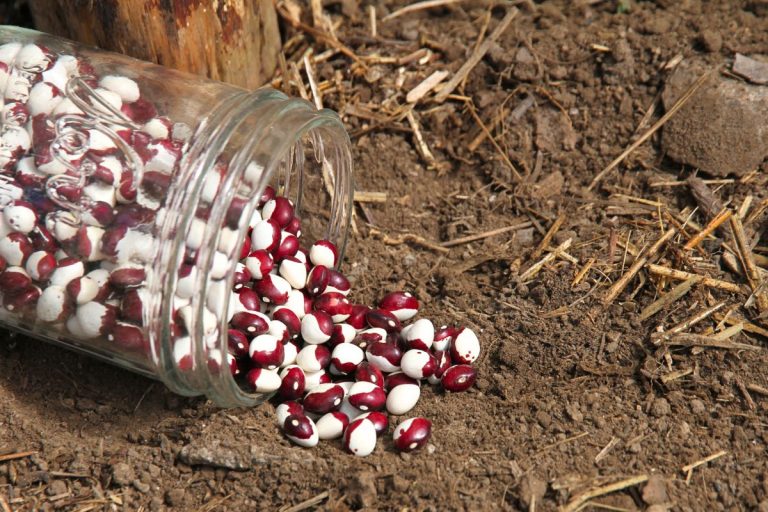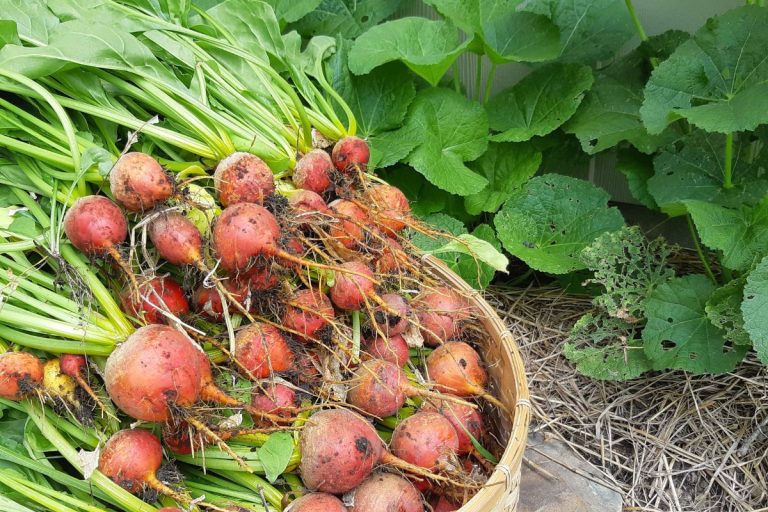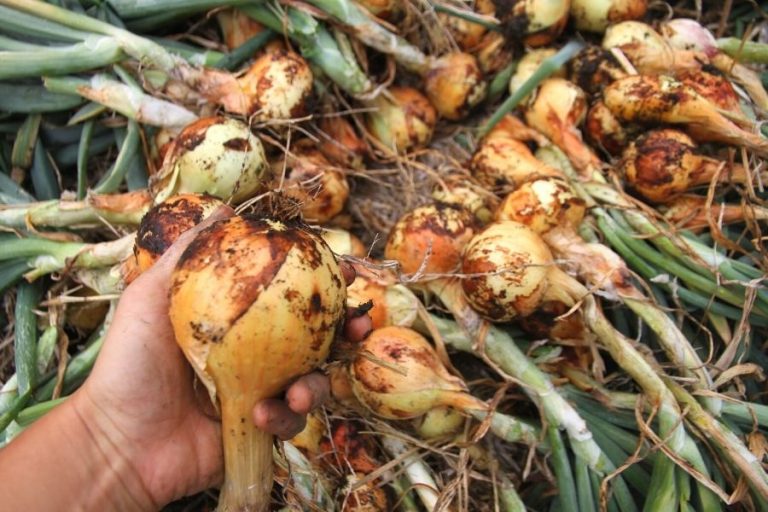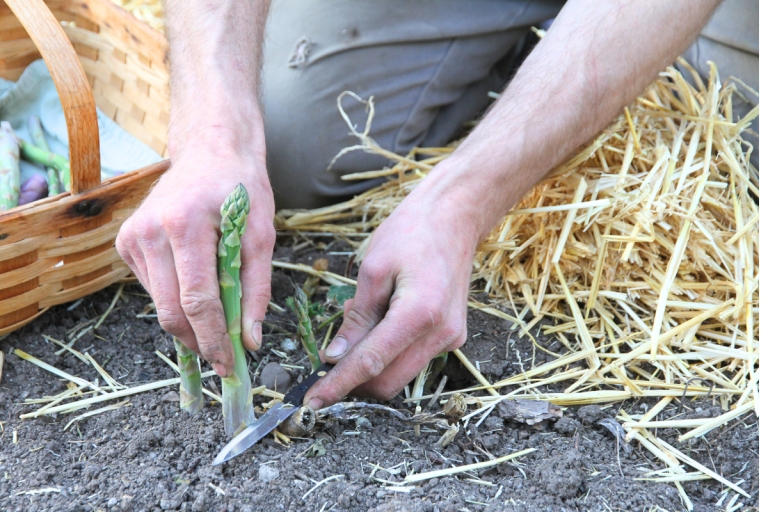How to Plant Hardneck Garlic in the Fall
Learn how to plant hardneck garlic in the fall the simple way, so you get extra large bulbs the following year!

Garlic is a low maintenance crop that is easy to plant, easy to care for and is easy to harvest. If you use garlic in the kitchen and enjoy gardening, I'd highly encourage you to take the leap and start growing your own!
In my kitchen, homegrown garlic is a staple vegetable, just like potatoes and carrots. I love using fresh veggies in my cooking, and I get immense satisfaction from growing my own, even if it does mean I deal with more dirt in the house! 🙂
I enjoy growing a variety of vegetables, but garlic is one of my favorites. It requires very little effort on my part, especially when you compare it to beets or carrots that need to be thinned 1-2x per year!
Here are the key 4 reasons I like growing garlic so much!
- Garlic cloves are big and that makes them very easy plant (especially with kids!)
- Individual cloves are quickly planted in the fall and sit all winter, which means its one less thing you have to worry about in spring.
- Beds of garlic do well with a mulch cover, which mean no weeding during the garden season!
- You can buy garlic once and save your own cloves for planting every year, which makes it a very cheap crop to grow!
In my garden and kitchen, garlic is a necessity.
When I garden, shortcuts and time saving tips are essential. So I'm going to sprinkle my best tips for you throughout this post!
Now a quick note on garlic types.
Hardneck Garlic vs Softneck Garlic Types
Before we get started, you need to know there are two types of garlic. Hardneck types and softneck garlic types are similar, with a few subtle differences.
- Hardneck garlic grows quickly and is very cold hardy, while softneck garlic is great for warmer climates.
- Hardneck varieties have more heat and fire, while softneck garlic tends to be milder and sweeter.
- Hardneck garlic cloves tend to be bigger than softneck types.
- Hardneck garlic varieties grow a round, center stem that will produce a flower in the summer (garlic scapes), whereas softneck garlic does not.
- Hardneck garlic tops are very stiff when dried on account of the center stem, but softneck varieties have a pliable top (which makes them easy to braid).
- Hardneck garlic doesn't usually last as long as softneck garlic in storage.
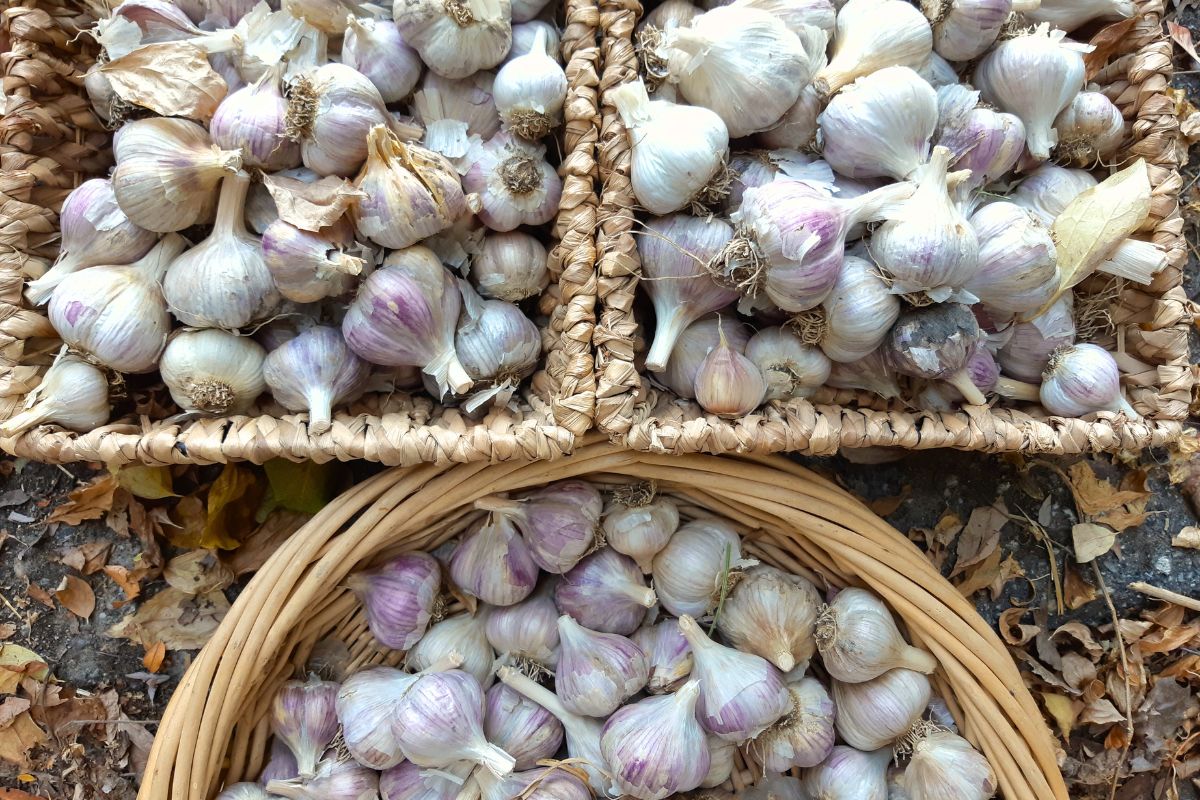
If you live in the south, you'll want to plant softneck garlic. And if you live in the north, you can plant both, but many folks prefer the cold hardiness of hardneck garlic varieties.
Video: Learn How to Plant Garlic
How to Plant Hardneck Garlic
Step 1: Choose a Variety of Hardneck Garlic
There are many different types of hardneck garlic you can grow in your own garden. In the past, I've grown a Russian Red and Chesnok Red, but I'm giving Big Boy a try this year.
Tip: if you don't know what variety to try, talk to a gardener in your area and see what they're growing. It will likely do well for you too.
Step 2: Buy Seed Garlic from a Seed Company Supplier
It's best to buy garlic from a certified seed company (vs a grocery store). Their hardneck garlic bulbs will be guaranteed disease free, and you shouldn't have any problems on that front.
If you have a seed company you like to get vegetable seeds from, check with them. They probably carry garlic seed and will ship it to you in the fall, at the right time for your gardening zone.
You can also check at your local garden center.
Tip: if you have a gardening friend who grows garlic, you can check and see if they have extras to share! That's how I originally got started.
How many bulbs should you buy? I'll show you how to figure that out in the Q&A below.
Step 3: Prepare a Garden Bed for Fall Planting
Garlic likes two things! It grows well in 1) loose soil and 2) fertile soil.
When you are working up a garden bed for fall planting, add some composted animal mature or organic matter if you can.
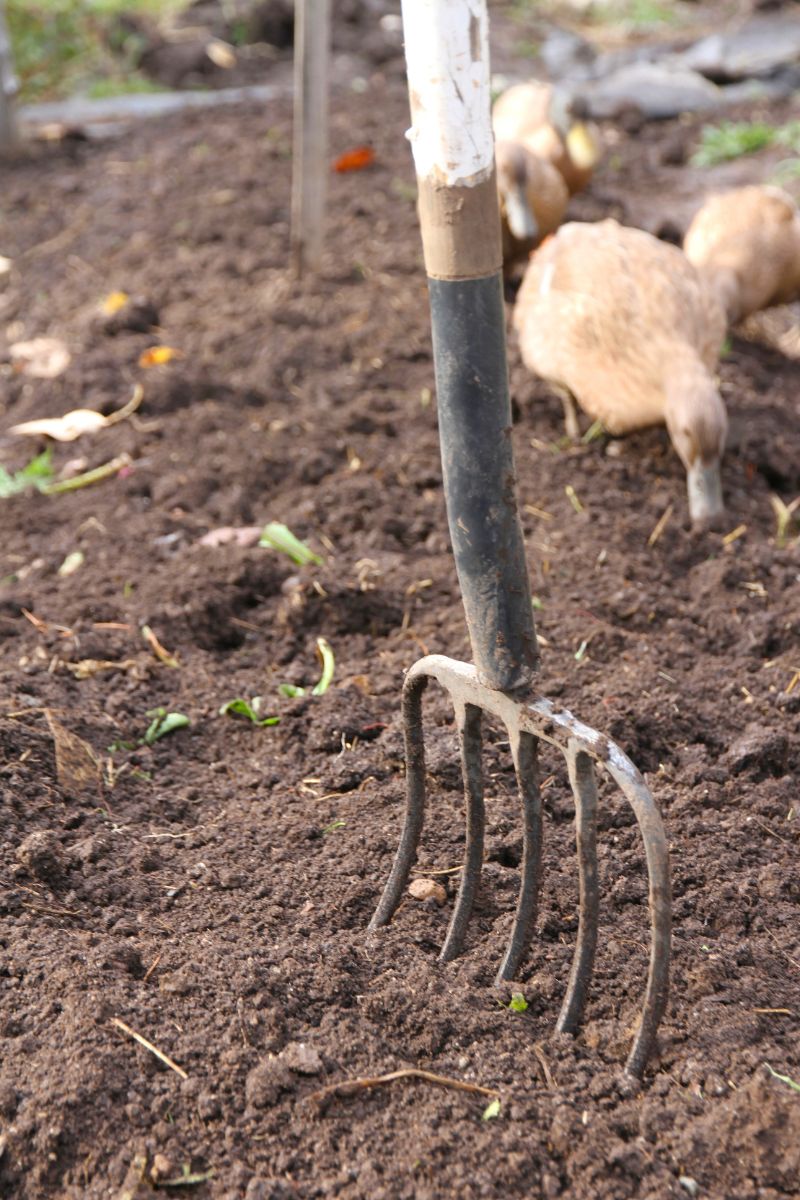
Yes, even though they're rather wild, my ducks are always on hand whenever I turn soil in the gardens!
Also be sure to work the bed over with a pitchfork or broad fork. Your garlic plants will be healthier and you'll get larger bulbs the following summer.
Helpful Tip: I like to plant my garlic in wide rows to maximize space. Some of my beds are almost 3 feet wide, so I can grow a lot of garlic without using up very much space.
Step 4: Divide Whole Bulbs Into Individual Cloves
Before planting, you'll want to break up whole bulbs, so you have individual cloves to work work.
Helpful tip: don't ever plant whole garlic bulbs! Break whole bulbs into individual cloves, and each single clove will create an entire new bulb.
Depending on how much garlic you have for planting, you may want to leave the bulb intact and just pull off the biggest and best cloves for your garden. But that's only if you have extra garlic. Just remember that big cloves produce more big cloves.
Step 5: Plant Garlic Cloves 6 Inches Apart
If your garden soil is loose, it's very easy to plant cloves.
You'll want to make a hole for each garlic clove. I hold 3 middle fingers together and poke the down into the soil until I reach the knuckles on my hand.

I know my fingers create a hole that is 2 inches deep, and that's what garlic needs! It's rather nice having a built-in measuring stick! 😉
Holes should be spaces 6 inches apart in every direction.
Stuff cloves into these holes, with the pointed end up.

Helpful Tip: things move along faster if you plant a clove in every hole immediately after making each one. Then you don't have to worry about dirt backfilling.
Step 6: Cover the Cloves with Soil and Mulch
Drag a rake over the garden bed and you'll quickly cover every planted clove. Or you can use your hands to sweep dirt around.

This accomplished, cover the entire garden bed with a 2 inch layer of loose straw.
This will 1) insulate the garlic over the winter, 2) give you great weed control the next summer and 3) lock moisture in so your garlic is less likely to dry out.

Step 7: Wait for Spring Growth
With your garlic seed planted and mulched, all you have to do is let it sit. Hardneck garlic will overwinter beautifully and appear in the early spring, about the same time your rhubarb starts appearing.
Questions About Growing Your Own Garlic
What is the difference between garlic bulbs and garlic cloves?
Garlic bulbs are whole, intact groups of garlic cloves that are covered with a white papery skin. Cloves are the individual lobes that make up a garlic bulb.
How much garlic do I need to buy for planting?
The first question you have to ask is "how much garlic do I use in a week?"
For the sake of math, let's just say you use 1 bulb a week. That means you need at least 52 garlic bulbs for a year's supply of garlic in the kitchen.
And if you want to save your own garlic seed (I highly recommend you do!), this also needs to be considered.
About 20% of your garlic harvest will need to replanted to maintain numbers the following year.
Do the math and you'll realize you need to purchase about 62 garlic bulbs (whole bulbs) for planting a year's worth of garlic and to have a self sustaining garden!
Pin this for later!
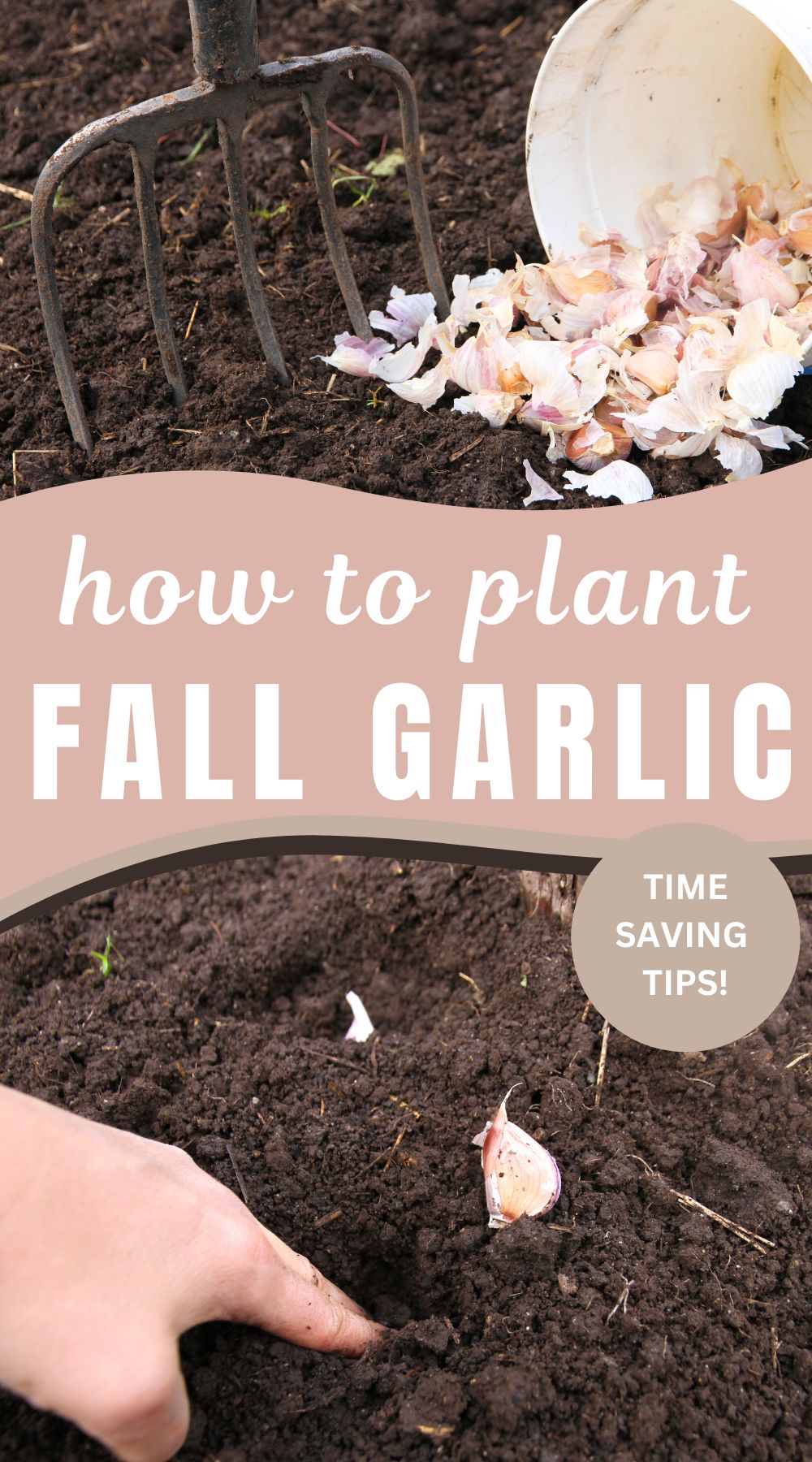
Why do gardeners plant garlic in late fall, instead of the spring?
Garlic planted in the fall puts out roots but doesn't actually put up green shoots. So when early spring arrives, the garlic plant gets a head start and has more time produce large bulbs before the early summer harvest season.
Can I plant garlic in the spring?
Yes, you can plant garlic in early spring. Spring-planted garlic will produce small cloves, but you will get a harvest. Just make sure cloves go in as soon as you can work the ground!
What are garlic scapes?
Garlic scapes are what give hardneck garlic their name!
Hardneck garlic varieties have a round, center stalk that cloves grow around. In late spring, this stalk appears above the green leaves as a round, curling green stem.
If you want large garlic bulbs, it needs to be snapped off, so the plant puts all its energy into the growing a large bulb. If scapes are left, they will produce a flower and garlic bulbils.
How do I know when to harvest my hardneck garlic?
Hardneck garlic is usually ready for harvest in late June or early July. You can tell by observing the green leaves on your garlic.
When the tips of the garlic leaves start turning brown, you know it's time. I have another article that walks you through all that here: How to Harvest, Dry and Store Hardneck Garlic
What are the best varieties of hardneck garlic for my garden?
It really depends. I'd recommend talking to some gardeners in your area and see what varieties of garlic they grow.
You don't have to do exactly as they have done, but it will give you a place to start. If you get lucky, some of them might even share their seed garlic with you!
More About Hardneck Garlic
How to Harvest, Dry and Store Hardneck Garlic
How to String Hardneck Garlic Bulbs in Bundles
